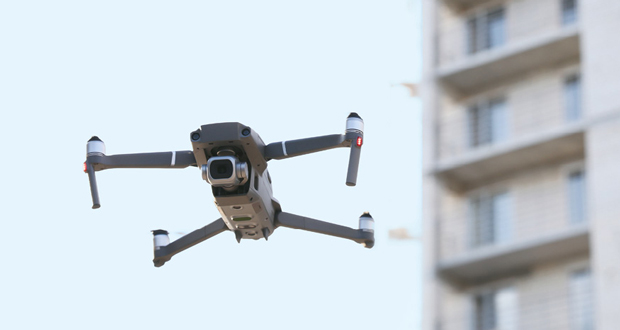SMARTER APPROACH
Smart façade inspection using digital twin technology can automate and improve façade inspection quality, as well as save costs and minimise safety risks. This innovative approach to façade inspection uses drones and artificial intelligence (AI) to check for deteriorating materials and underlying problems with building façades. As it is equipped with a smart piloting system, the drone ensures both operational safety and high-quality inspection. High-resolution visual and thermal cameras can accurately scan the exterior of buildings, with thermal cameras being particularly effective for the detection of any hidden defects, capturing potential facade failure points.
An advanced AI model will also ensure that compliant inspection reports, which meet the highest industry standards, are delivered. This is achieved by using a drone to capture images along the façade of the building. AI can then be used to assist human inspectors with data analysis. Raw data, collected by the drone, is fed into the AI platform, so that the algorithms can be used to maintain privacy by detecting and masking people that have inadvertently been photographed by the drone. At the same time, they identify façade defects, classifying them by type (cracks, decolouration, corrosion, sealant deterioration etc) and severity, as well as giving recommendations for repair. As AI is not infallible, it is vital that a human inspector reviews the results and uses engineering judgement, giving feedback that can be used to continually improve the AI algorithm.
This means that façade inspection can be conducted in a fraction of the time and cost, as compared to the traditional methods of inspection. The resulting 3D representation of the building façade is also helpful in better understanding the building’s structure and will also automatically update any detected defects. Inspection reports are also able to make use of an intuitive 3D model, so that the state of the façade can be visualised, and any necessary repairs tracked and managed. This is because the façade inspection platform constructs a 3D model of the building façade, which helps to better understand the building structure and automatically locate the detected defects on the building. As repairs and follow-ups can be seamlessly managed through the drone platform, along the lifecycle of a building, efficiency is improved, and costs saved.
Like all building elements, façades will age and be subject to soiling and structural deterioration, accelerated by exposure to man-made pollutants and other environmental factors. Damage or deterioration to façade elements can result in water penetration, falling debris and, in extreme cases, façade failure – all of which have the potential to cause harm. It is therefore vital that any risks are mitigated as early as possible in order to keep buildings safe for occupants and people within its vicinity.





